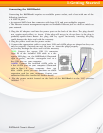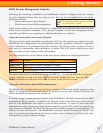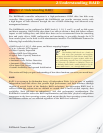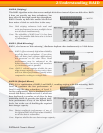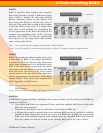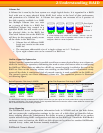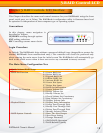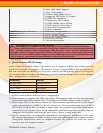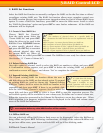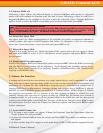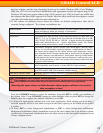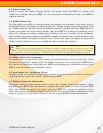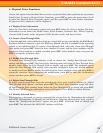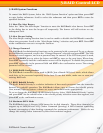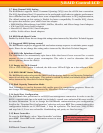
RAIDBank4 Owner’s Manual
19
5.6 Max SATA Mode Support
5.7 Host NCQ Setting
5.8 Volume Read Ahead Cache
5.9 Staggered HDD Spin Up control
5.10 HDD Idle Spindown
5.11 Empty tray LED Control
5.12 HDD SMART Status Polling
5.13 Disk Capacity Truncation
5.14 Serial Port Configuration
5.15 Reset Controller
6. Additional System Functions 6.1 Ethernet Configuration
6.2 View System Events
6.3 Clear All Event Buffers
6.4 Hardware Monitor
6.5 System Information
CONSIDERATIONS FOR RAID VOLUME CREATION
Your RAIDBank4 is capable of creating large logical volumes (LUNS) in excess of 2 Terabytes.
Large LUNS (>2TB) must be supported by the host bus adapter and the host Operating System to
be usable. Windows 2003, Vista, Windows 2008, Mac OS X >10.4.8, and Linux distributions with
appropriate kernels all support large LUNS. Windows XP and prior cannot address large LUNS natively
over USB, and must use eSATA host bus adapters that have RAID support to be usable. MicroNet offers such
host bus adapters- consult your MicroNet authorized reseller for more information.
!
1. Quick Volume/RAID Setup
Quick Volume And RAID Setup is the fastest way to prepare a RAID and volume set, and
needs few keystrokes to complete. This function creates a single RAIDset and one volume set,
and you can modify the RAID level, stripe size, capacity, and designating drives as Hot Spares.
The created RAIDset will have the following properties (default setting values can be changed
after configuration is completed):
Parameter Setting
Volume Name Volume Set#00
Host Channel/ Drive Select SATA/0
Cache Mode Write Back
SATA Xfer Mode SATA300+NCQ
1.1 Specify desired RAID level and spare configuration
1.2 Select volume set capacity size. When choosing >2TB support, make sure the host operating
system can support the volume (see “Consideration for RAID volume creation” above)
1.3 Select stripe sizes for the current volume set. This parameter specifies the size of the stripes
written to each disk in a RAID 0, 1, 10, or 5 volume set. You can set the stripe size to 4 KB, 8
KB, 16 KB, 32 KB, 64 KB, or 128 KB. A larger stripe size provides better-read performance,
especially if your computer does mostly sequential reads. However, if you are sure that your
computer does random read requests more often, choose a small stripe size.
1.4 Specify foreground or background initialization. Background initialization will make
the volume immediately available to host access, but initialization will complete slower.
Foreground Initialization must be completed before the volume set ready for system
accesses, but will complete quicker.
3-RAID Control-LCD



